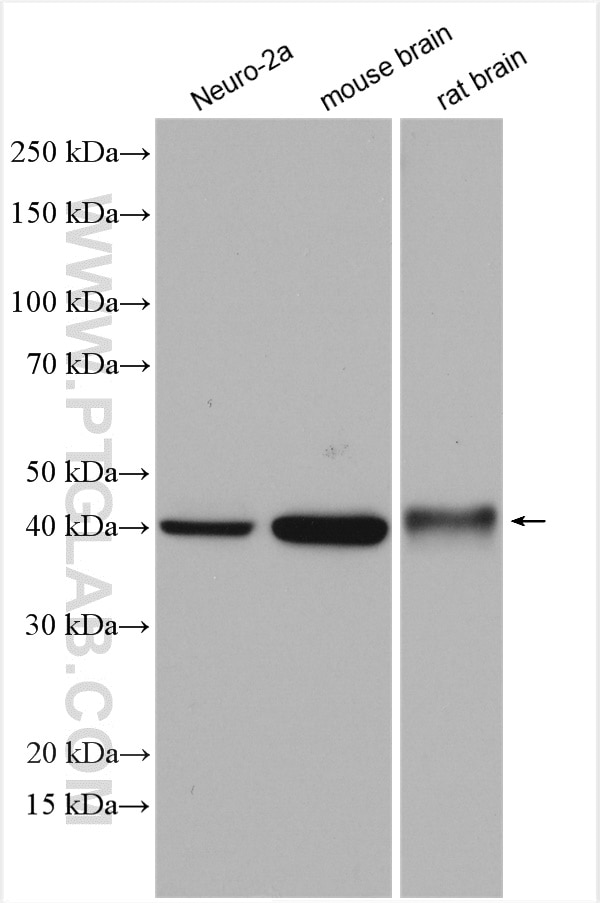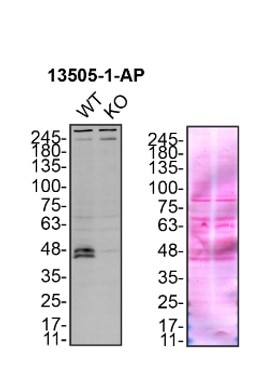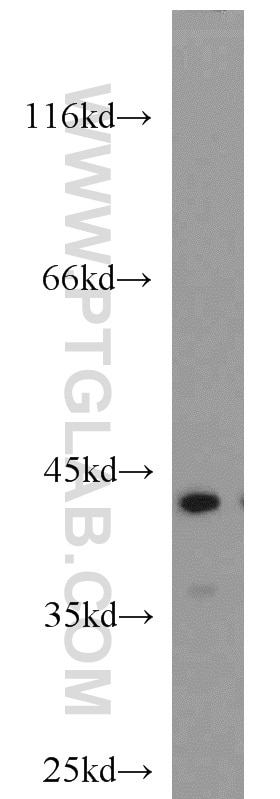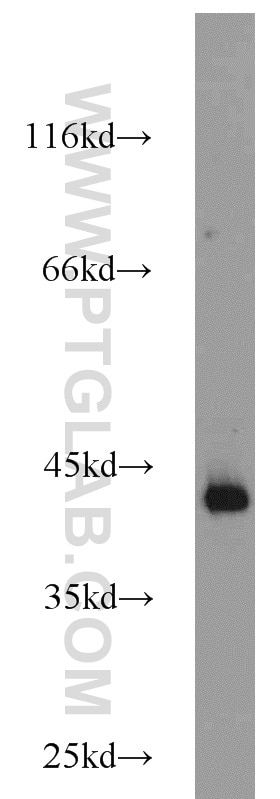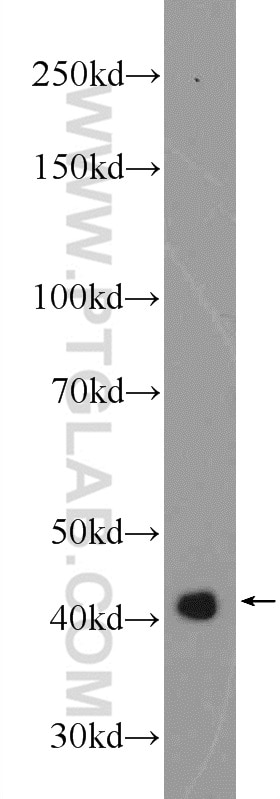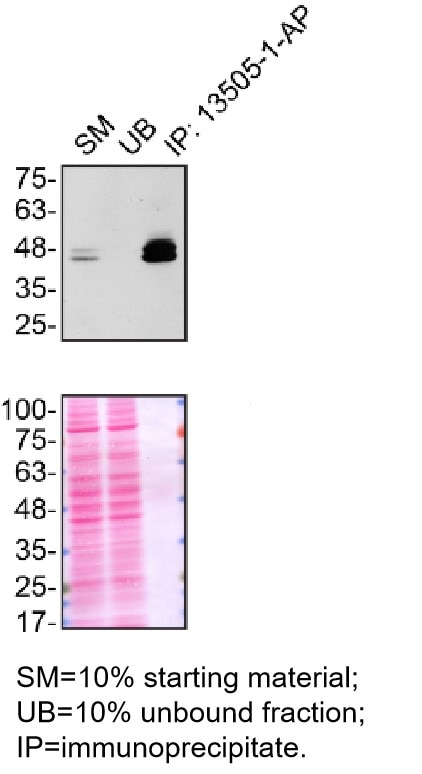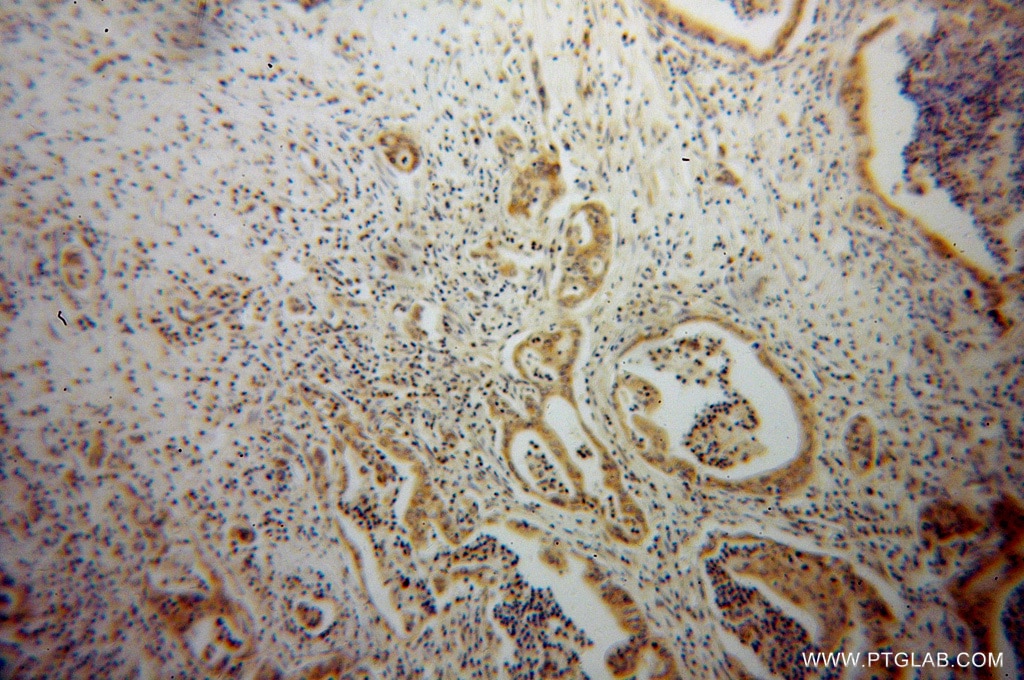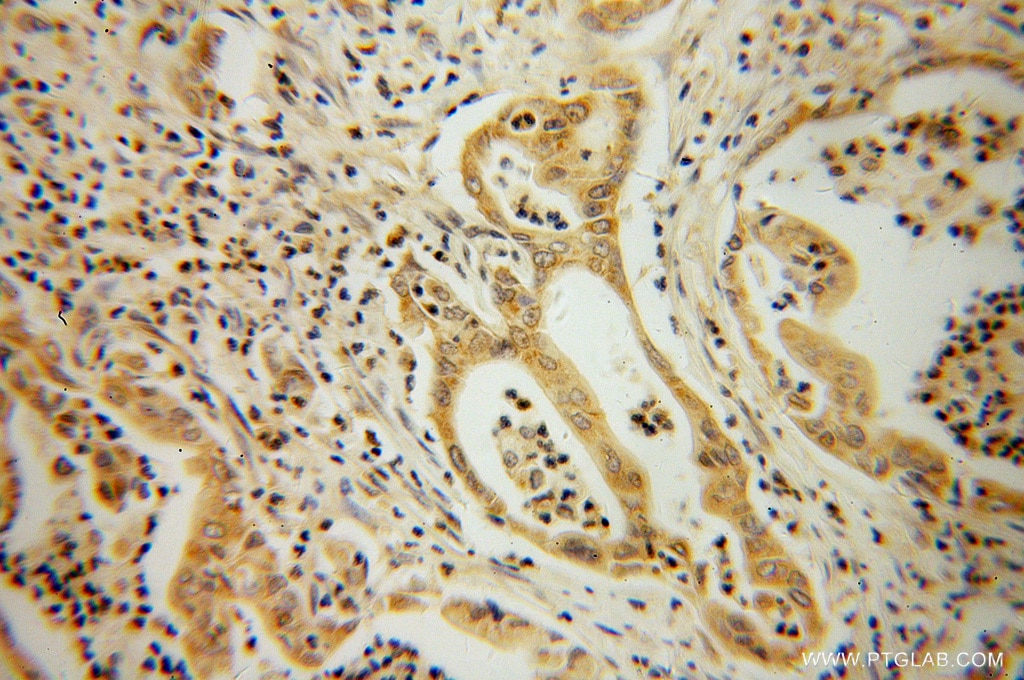Tested Applications
| Positive WB detected in | Neuro-2a cells, mouse heart tissue, mouse placenta tissue, HEK-293 cells, mouse brain tissue, rat brain tissue |
| Positive IP detected in | HEK-293 cells |
| Positive IHC detected in | human pancreas cancer tissue Note: suggested antigen retrieval with TE buffer pH 9.0; (*) Alternatively, antigen retrieval may be performed with citrate buffer pH 6.0 |
Recommended dilution
| Application | Dilution |
|---|---|
| Western Blot (WB) | WB : 1:1000-1:4000 |
| Immunoprecipitation (IP) | IP : 0.5-4.0 ug for 1.0-3.0 mg of total protein lysate |
| Immunohistochemistry (IHC) | IHC : 1:20-1:200 |
| It is recommended that this reagent should be titrated in each testing system to obtain optimal results. | |
| Sample-dependent, Check data in validation data gallery. | |
Published Applications
| KD/KO | See 6 publications below |
| WB | See 23 publications below |
| IHC | See 4 publications below |
| IF | See 6 publications below |
| IP | See 3 publications below |
| CoIP | See 3 publications below |
Product Information
13505-1-AP targets ATX3,ATXN3 in WB, IHC, IF, IP, CoIP, ELISA applications and shows reactivity with human, mouse, rat samples.
| Tested Reactivity | human, mouse, rat |
| Cited Reactivity | human, mouse, pig, caenorhabditis elegans |
| Host / Isotype | Rabbit / IgG |
| Class | Polyclonal |
| Type | Antibody |
| Immunogen |
CatNo: Ag4341 Product name: Recombinant human ATX3,ATXN3 protein Source: e coli.-derived, PGEX-4T Tag: GST Domain: 1-370 aa of BC033711 Sequence: MESIFHEKQEGSLCAQHCLNNLLQGEYFSPVELSSIAHQLDEEERMRMAEGGVTSEDYRTFLQQPSGNMDDSGFFSIQVISNALKVWGLELILFNSPEYQRLRIDPINERSFICNYKEHWFTVRKLGKQWFNLNSLLTGPELISDTYLALFLAQLQQEGYSIFVVKGDLPDCEADQLLQMIRVQQMHRPKLIGEELAQLKEQRVHKTDLERVLEANDGSGMLDEDEEDLQRALALSRQEIDMEDEEADLRRAIQLSMQGSSRNISQDMTQTSGTNLTSEELRKRREAYFEKQQQKQQQQQQQQQQQQQQQQQQQGDLSGQSSHPCERPATSSGALGSDLGDAMSEEDMLQAAVTMSLETVRNDLKTEGKK Predict reactive species |
| Full Name | ataxin 3 |
| Calculated Molecular Weight | 370 aa, 43 kDa |
| Observed Molecular Weight | 35-42 kDa |
| GenBank Accession Number | BC033711 |
| Gene Symbol | ATXN3 |
| Gene ID (NCBI) | 4287 |
| RRID | AB_2061192 |
| Conjugate | Unconjugated |
| Form | Liquid |
| Purification Method | Antigen affinity purification |
| UNIPROT ID | P54252 |
| Storage Buffer | PBS with 0.02% sodium azide and 50% glycerol, pH 7.3. |
| Storage Conditions | Store at -20°C. Stable for one year after shipment. Aliquoting is unnecessary for -20oC storage. 20ul sizes contain 0.1% BSA. |
Background Information
ATXN3, which has deubiquitinase activity and act as a component of the ubiquitin proteasome system, plays a role in transcriptional regulation and neuroprotection. ATXN3 interacts with RAD23, HHR23A and HHR23B, involves in the pathology of MJD. ATXN3 is a mixed-linkage, chain-editing enzyme and that the UIM region of ATXN3 regulates its substrate specificity. Contains an N-terminal deubiquitinating domain, called the Josephin domain, followed by 2 ubiquitin-interacting motifs (UIMs) and a polyQ tract near the C terminus. ATXN3 can be phosphorylated in a protein casein kinase-2-dependent manner, thus the MW would be larger than the predicted one.
Protocols
| Product Specific Protocols | |
|---|---|
| IHC protocol for ATX3,ATXN3 antibody 13505-1-AP | Download protocol |
| WB protocol for ATX3,ATXN3 antibody 13505-1-AP | Download protocol |
| Standard Protocols | |
|---|---|
| Click here to view our Standard Protocols |
Publications
| Species | Application | Title |
|---|---|---|
Nat Commun TSPAN8 promotes cancer cell stemness via activation of sonic Hedgehog signaling.
| ||
PLoS Genet The Role of the Mammalian DNA End-processing Enzyme Polynucleotide Kinase 3'-Phosphatase in Spinocerebellar Ataxia Type 3 Pathogenesis.
| ||
Sci Total Environ USP15 participates in DBP-induced testicular oxidative stress injury through regulating the Keap1/Nrf2 signaling pathway. | ||
PLoS Genet Inactivation of PNKP by mutant ATXN3 triggers apoptosis by activating the DNA damage-response pathway in SCA3. | ||
Neurobiol Dis A new humanized ataxin-3 knock-in mouse model combines the genetic features, pathogenesis of neurons and glia and late disease onset of SCA3/MJD. |

